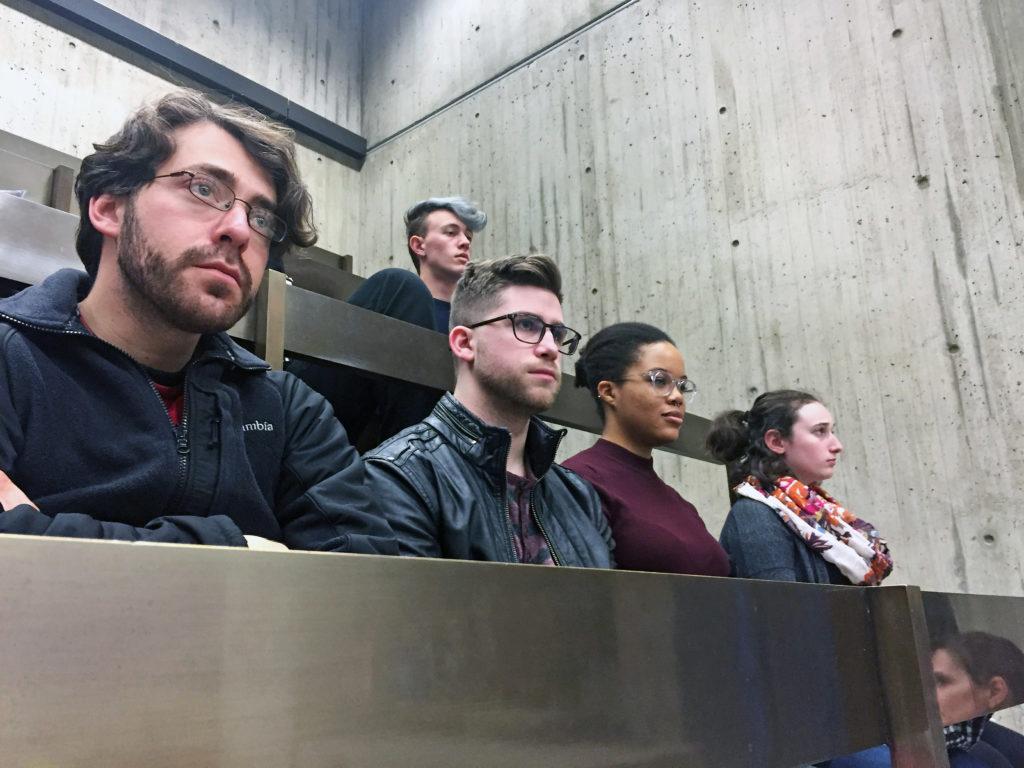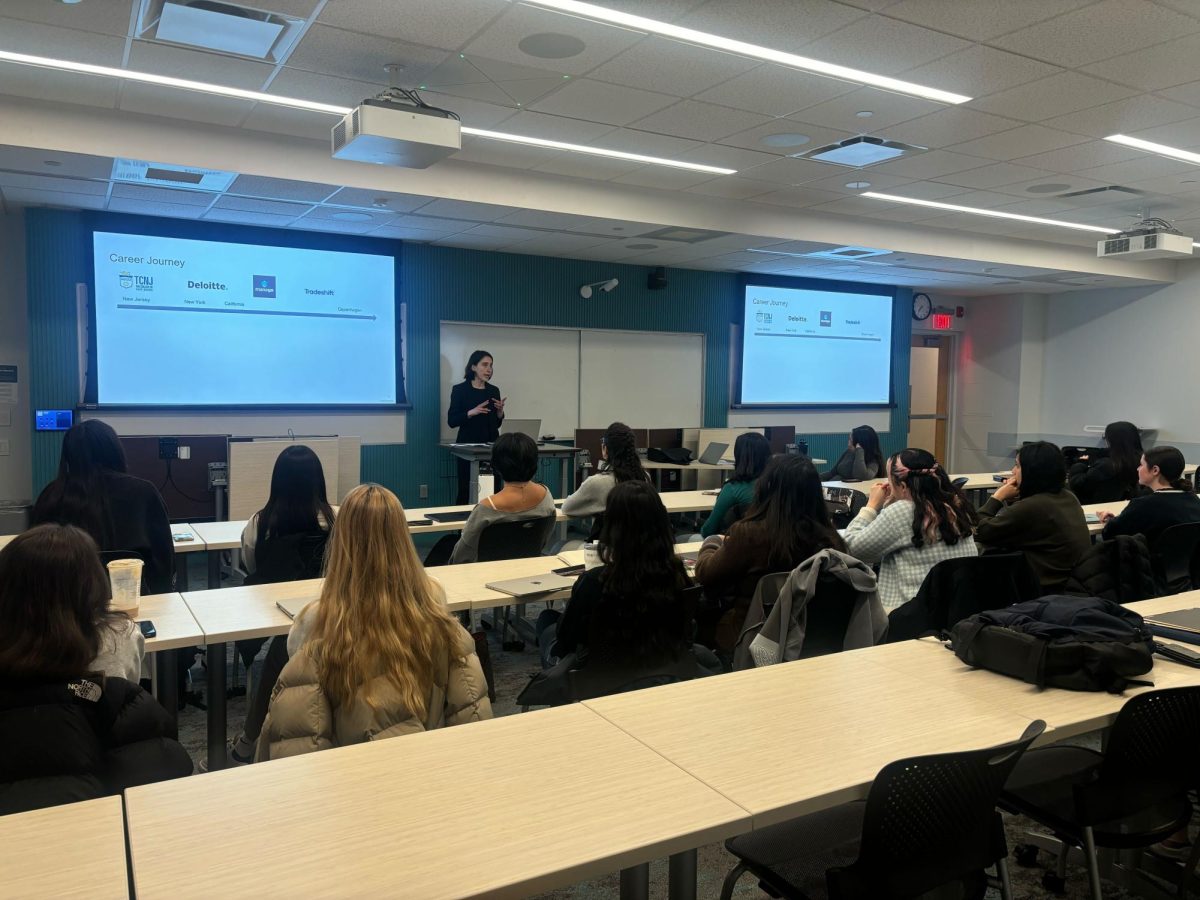By Cassidy DeStefano, news editor
Members of on-campus activist coalition Students Against Institutional Discrimination (SAID) condemned Northeastern University’s (NU) decision to arm its officers with semiautomatic weapons at a Boston City Council meeting Monday through verbal testimony and a “die-in” demonstration immediately afterward.
“Die-ins are traditionally seen in a number of Black Lives Matter protests across the US,” said Chelsea Canedy, third-year biology and political science double major and executive director of SAID. “We felt it was necessary because it relates to the implications of having a more heavily-armed police body.”
Canedy said that approximately 25 students participated in the event at City Hall, laying on the ground in silence in solidarity for the victims lost to police brutality.
“We as students of color already feel that the presence of our campus police force endangers those students,” she said. “We hope that today starts a dialogue between Northeastern and its community members.”
The accounts of SAID students echoed the continuing discord between city officials, the Boston Police Department (BPD) and residents of nearby communities.
City Councilors Josh Zakim and Tito Jackson initially called the meeting in January to address the university’s alleged lack of communication when it launched the plan last year. Northeastern officials chose not to attend Monday, instead responding to the allegations with a written statement.
“Northeastern values the collective competencies of BPD and other area agencies and is committed to fostering cooperation on critical public safety matters,” Senior Vice President and General Counsel Ralph C. Martin II said in a Feb. 25 email to City Councilor Andrea Campbell made public in a Feb. 29 News at Northeastern article.
NU’s actions drew the anger of Councilor Zakim, who said the administration’s behavior illustrates the disconnect between its own interests and those of the city.
“I think that the absence of Northeastern University shows utter disregard for the community and the elected council,” he said.
SAID member and freshman English major Ben Simonds-Malamud agreed.
“I think it’s super important that if the university claims to engage the community that they actually do that in a face-to-face way,” he said.
Both Simonds-Malamud and freshman American Sign Language major and SAID member Elliana Streifer spoke out against the policy at the hearing. Streifer’s opposition, she said, stems from a 2013 school shooting at Arapahoe High School in Centennial, Colorado that occurred during her junior year.
“I grew up in the shadow of school shootings,” Streifer said. “And I believe that the police at my school did exactly what they were supposed to do. They took down the threat as quickly as they could, they did it safely and they did it without losing more of our students.”
She said she feels that offering proper training for Northeastern University Police Department (NUPD) and BPD officers is a more logical solution than adding tactical rifles to the arsenal.
“It’s about knowing what to do and how to do it,” Streifer said. “It’s about knowing when to run into a building and when not to, knowing when to confront a shooter and when not to.”
Others, including M. Whitney Kelting, a Northeastern associate professor of religious studies, said the city police force is equipped to handle situations on its own without a secondary layer of campus response.
“In 2005, I had an incident of a student who was threatening to me in the classroom, and BPD was absolutely responsive and on their toes and I felt very safe,” Kelting said.
She added that faculty members were not directly informed of the administration’s decision until after its implementation.
“No real engagement with that conversation has happened with faculty or students,” Kelting said. “We are employees of this institution that are now in a work environment that is less safe.”
Boston Police Superintendent Chief William Gross agreed that city police services are a sufficient response.
“We’re able to respond to any threat on campus within minutes,” he said at the hearing.
Gross added that increased communication between the university and its partners is key.
“Northeastern is not a stand-alone campus,” he said. “It is fully integrated into the communities of Boston,” he said. “Any change in policy should be brought up first with the lead police force.”
One way the university has aimed to spur dialogue with the campus community is through a series of town hall forums that lay out long-range plans for future action.
The most recent town hall, held on Tuesday, played out as a series of group discussions open to staff, faculty and students about how the university can incorporate diversity and inclusion into the academic plan. One of the most common points at the event was NU’s need and desire to be a better neighbor. Participants also brought up the need to articulate a more fluid understanding of diversity and inclusion instead of viewing them as static terms. A second town hall on diversity and inclusion is scheduled for Friday, March 18 to accommodate students who couldn’t attend the first one.
Joseph Lagalla, junior chemical engineering major and director of communication for student organization NU Pride, suggested that the university take steps to inform its diverse population of pivotal decisions before they are finalized.
“The university can definitely send representatives to these different activist groups on campus and use them as a control group for policies that it plans to implement,” Lagalla said.
Ultimately, SAID members and meeting participants shared the goal of forcing NU to become more transparent about its actions.
“We don’t just want the removal of guns from campus,” Canedy said. “We want an open dialogue with our university.”
Mack Hogan contributed to the reporting for this story.
Photo by Cassidy DeStefano















